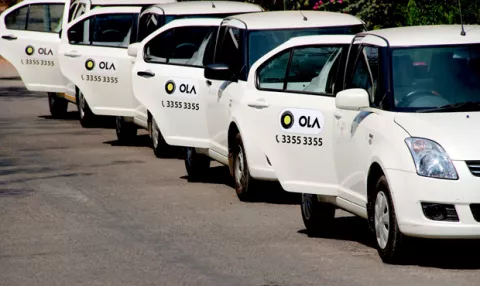
With growing urbanisation, the need for reliable mobility services has become critical. There is a huge gap in supply and demand of public transport with decreased resources and increased commuters. But whether this could result in a significant opportunity along with an ability of enhancing the lives of people at the bottom of the pyramid, was not expected. Drivers who earned up to Rs 10,000 a month now earn over Rs 50,000 and up to Rs 90,000 a month prompting many students also taking up these jobs to fund their education.
Smart mobility is now integral to urban planning discussions. And a city transport plan that examines the way people move around using different modes of transport-walking, cycling, bus, train, taxi, motorcycle, car, freight vehicles-is essential.
Today, technology-enabled taxis are helping to fill a mobility service vacuum in Indian cities. The expansion of the Internet led to the creation of companies like TaxiforSure, Uber, Ola, etc, that offer online/mobile app booking and promise a secure and safe journey. The radio taxi market has witnessed phenomenal growth in the past six to seven years and is currently growing at 15-20 per cent per year. Ola has acquired TaxiForSure which currently operates in 47 cities with 15,000 registered vehicles and has 1,700 employees. Ola offers 150,000 vehicles in 67 Indian cities. Last heard, Uber was in 11 Indian cities, its second biggest geographical footprint after the United States.
The race is now on for mobility aggregators to build platforms and associated tools to enable a seamless, real-time, door-to-door multi-mode transportation solution. Mobility aggregators are trying to provide the best user experience by offering a real-time journey planner to travellers in major cities. The Scout app for example, created in India, is able to check real-time availability of cabs across multiple service providers (Ola, Uber, Lyft, Sidecar, Hailo, TaxiforSure) in one single app in major Indian cities. Once you select your nearest cab, the app will lead you to the relevant service provider’s app to complete the booking.
In the smart mobility and travel industry, offering technology is not enough; mobility providers and aggregators also need to transform their service to clients. To improve service, one option is to enable better communication between travellers, city transport institutions and transportation providers. Indeed, the mobility era will force the travel industry to reinvent the notion of the trip, historically far too static, and deliver seamless, proactive and interactive solutions for the whole journey, including the last mile.
###
-The writer is Founder Director, Smart Cities Council India
Related articles:
Digital India can be a huge fillip for healthcare and education
Why cycling should be mandatory in smart cities
Why AMRUT can be a bigger game changer



